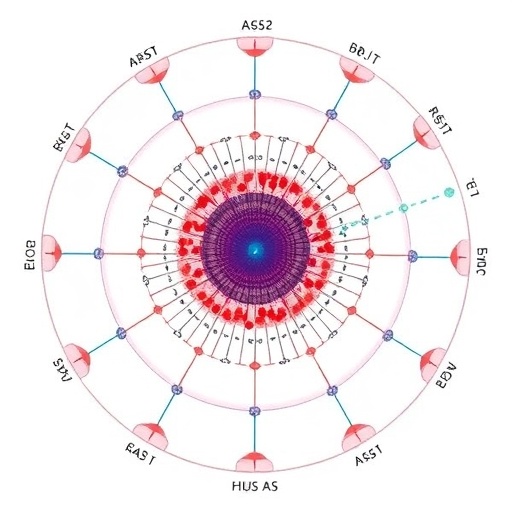
Lead pollution, a significant issue affecting human health, has its roots deep in history, tracing back to the Roman Empire. Recent research conducted by scientists at the Desert Research Institute (DRI) has unearthed compelling evidence that lead exposure during the Roman era may have impacted the cognitive abilities of populations across Europe. This study utilizes advanced methodologies derived from ice core analysis, allowing researchers to create an atmospheric pollution record that vividly depicts the scale and effects of lead emissions during a pivotal time in human history.
The research, published in the esteemed journal Proceedings of the National Academy of Sciences (PNAS), meticulously examined lead pollution levels preserved in Arctic ice cores, dating from 500 BCE to 600 CE. This timeframe encompasses not only the rise of the Roman Republic but also its eventual decline. The analysis focused on the Pax Romana, a notable period of peace and stability that lasted approximately 200 years, which is characterized by vast economic and industrial expansion, including extensive mining operations.
Lead isotopes, captured in the ice cores, enabled the research team to pinpoint mining and smelting activities across Europe as primary sources of pollution during the Roman era. By applying sophisticated computer modeling techniques, the researchers mapped out the atmospheric movement of lead, illustrating how these emissions were dispersed and the resulting pollution levels across the continent. This research significantly deepens our understanding of the historical context of lead exposure and its demographic effects, serving to quantify likely reductions in IQ levels among the European populace due to this exposure.
Joe McConnell, the lead author of the study and an esteemed research professor at DRI, highlights the novelty of their approach: “This is the first study to take a pollution record from an ice core and invert it to establish atmospheric concentrations of pollution,” he asserts. The ability to link these historical records to human impacts, particularly cognitive decline, represents a groundbreaking advancement in environmental science and historical epidemiology.
To reconstruct these atmospheric pollution levels, McConnell and his team utilized data from meticulously extracted ice cores, some reaching depths of over 11,000 feet. These cores preserve layers of ice that have accumulated over millennia, encapsulating ancient gas bubbles and pollutants that offer a glimpse into the atmospheric conditions of bygone eras. Their findings illustrate not just the levels of lead pollution during the Roman period but also establish a critical connection to historical events marked by population declines, lending credence to the hypothesis that lead exposure contributed to significant societal difficulties during this time.
The main source of ancient lead pollution is attributed to silver mining, where the lead-rich mineral galena was processed to extract useful silver. This crude yet effective technique inadvertently released vast quantities of lead into the atmosphere, contaminating air quality and impacting health. Fast forward to the 20th century; much of the lead pollution was sourced from leaded gasoline, a major contributor to environmental lead levels until significant regulatory changes, particularly the Clean Air Act in 1970, redirected the trajectory of lead emissions in the United States.
As environmental scientists monitor the decline of lead in modern times, it becomes increasingly apparent to health experts the profound impacts lead exposure has on human development. In adults, long-term exposure can culminate in a myriad of health issues, including infertility, cardiovascular diseases, and cognitive impairments. The risks escalate in children, where even minimal lead exposure can detrimentally affect cognitive functions, leading to decreased IQ and academic performance—a grim correlation that underscores the urgency for public health initiatives aimed at reducing exposure.
The recent study provides a historical lens through which we examine lead pollution’s public health ramifications, particularly on cognitive functioning, which is easier to quantify statistically compared to other health effects. “An IQ reduction of 2 to 3 points may seem trivial,” asserts Nathan Chellman, coauthor and assistant research professor at DRI. “However, when extrapolated across the European population, the implications are monumental—potentially millions of affected individuals.”
Consequently, the research reveals that atmospheric lead pollution commenced during the Iron Age, reaching its zenith in the late 2nd century BCE—a time synonymous with the height of the Roman Republic. Following this apex, pollution levels witnessed a significant decline due to the socio-political crises of the Republic. However, as the Roman Empire ascended, lead emissions surged again, remaining elevated until the Antonine Plague devastated the population, evidencing a direct link between disease, societal challenges, and the prevailing environmental conditions.
In examining thousands of years of data, McConnell’s team postulates that over 500 kilotons of lead were suffused into the atmosphere during the height of the Roman Empire alone. This staggering amount is juxtaposed against modern pollution levels, which, although peaking at up to 40 times higher during the late 20th century, should not overshadow the historical significance of lead pollution and its long-lasting effects on human health.
The compelling nature of this research stands as a testament not only to the resilience and ingenuity of past civilizations but also serves as a cautionary tale about the ongoing ramifications of industrial pollution. It underscores the pressing need for awareness and proactive measures against pollutants that silently jeopardize public health, the environment, and ultimately, the cognitive future of generations.
In summation, the groundbreaking findings from DRI scientists elucidate the far-reaching consequences lead pollution has had throughout history, particularly during the Roman Empire, and highlight the importance of continued research into historical pollution dynamics that can inform our understanding of modern public health concerns.
Subject of Research: The effects of lead pollution from Roman-era mining and smelting on cognitive decline in European populations.
Article Title: Pan-European atmospheric lead pollution, enhanced blood lead levels, and cognitive decline from Roman-era mining and smelting.
News Publication Date: 6-Jan-2025.
Web References: Not applicable.
References: Not applicable.
Image Credits: Credit: Andrew Wilson.
Keywords: Lead pollution, cognitive decline, Roman Empire, atmospheric pollution, ice core analysis, public health.





